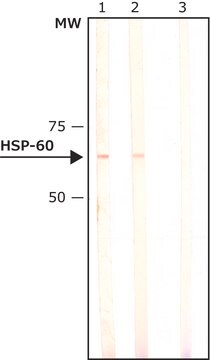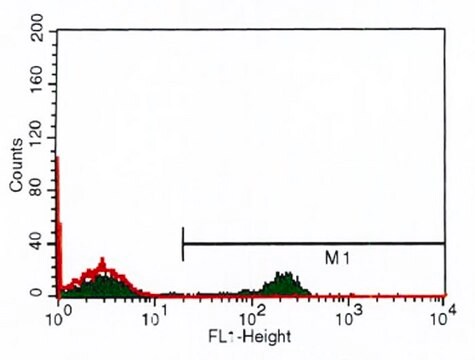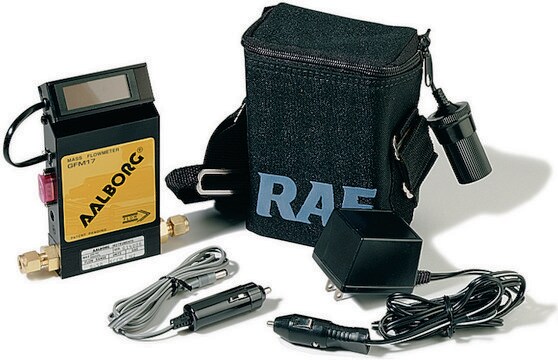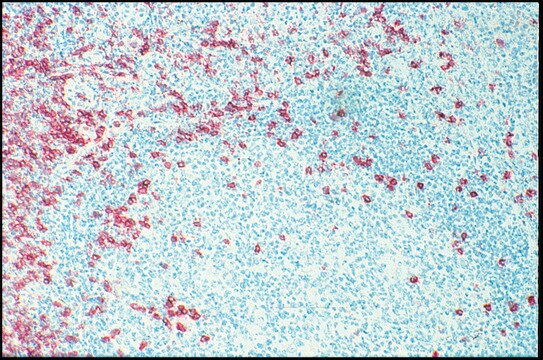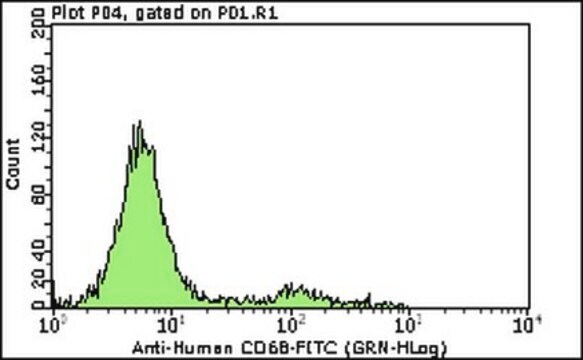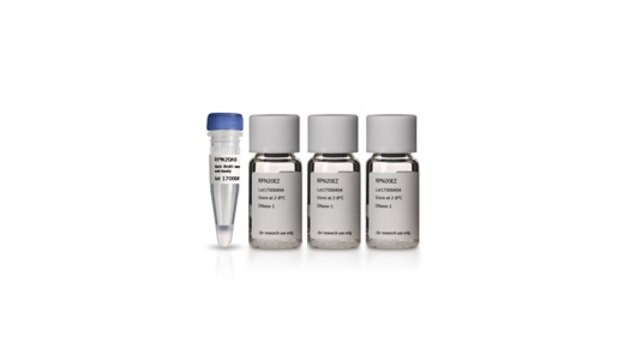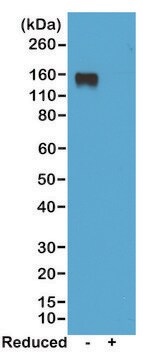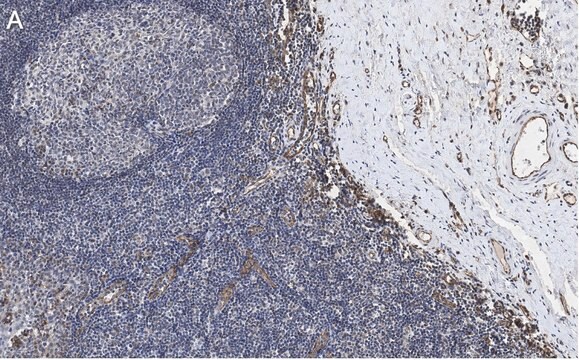MAB4211
Anti-CD34 Class I Antibody, clone B1-3C5
clone B1-3C5, Chemicon®, from mouse
About This Item
Polecane produkty
pochodzenie biologiczne
mouse
Poziom jakości
forma przeciwciała
purified antibody
rodzaj przeciwciała
primary antibodies
klon
B1-3C5, monoclonal
reaktywność gatunkowa
human
producent / nazwa handlowa
Chemicon®
metody
flow cytometry: suitable
immunofluorescence: suitable
izotyp
IgG1
numer dostępu NCBI
numer dostępu UniProt
Warunki transportu
wet ice
docelowa modyfikacja potranslacyjna
unmodified
informacje o genach
human ... CD34(947)
Powiązane kategorie
Specyficzność
Cell reactivity (Tindle et al., 1985):
Normal: No reaction with normal peripheral lymphocytes, granulocytes, monocytes, erythrocytes and platelets. Reacts with <4% of cells in normal bone marrow.
Clinical: Reaction
Acute myeloid leukemia (AML, M1 and M2) positive
Null lymphoblastic leukemia (Null ALL) positive
Common acute lymphoblastic leukemia (CALL) positive
Myeloblastic and lymphoblastic crises of chronic
granulocytic leukemia (CGL) positive
Chronic myeloid leukemia (CML) negative
T cell acute lymphoblastic leukemia (TALL) negative
B cell acute lymphoblastic leukemia (BALL) negative
Chronic lymphocytic leukemia (CLL) negative
Cell lines:
Reacts with early myeloblast line KG1. No reaction with null, B or T lymphoid, erythroid or later myeloid cell lines.
Immunogen
Zastosowanie
SUGGESTED USAGE DILUTION
1. Flow cytometry and indirect immunofluorescence 1:25
Dilute with isotonic buffer. Use 50 μl of diluted antibody per 1 x 10E6 peripheral blood mononuclear cells (PBMC) or bone marrow cells in 100 μl of buffer.
2. Indirect immunoperoxidase staining - the final dilution will depend on the assay conditions and detection system employed. However, a dilution of at least 1:25 will be applicable to most commonly used systems.
Cell Structure
ECM Proteins
Postać fizyczna
Przechowywanie i stabilność
WARNING: The monoclonal reagent solution contains 0.1% sodium azide as a preservative. Due to potential hazards arising from the build up of this material in pipes, spent reagent should be disposed of with liberal volumes of water.
Informacje prawne
Oświadczenie o zrzeczeniu się odpowiedzialności
Nie możesz znaleźć właściwego produktu?
Wypróbuj nasz Narzędzie selektora produktów.
Kod klasy składowania
12 - Non Combustible Liquids
Klasa zagrożenia wodnego (WGK)
WGK 2
Certyfikaty analizy (CoA)
Poszukaj Certyfikaty analizy (CoA), wpisując numer partii/serii produktów. Numery serii i partii można znaleźć na etykiecie produktu po słowach „seria” lub „partia”.
Masz już ten produkt?
Dokumenty związane z niedawno zakupionymi produktami zostały zamieszczone w Bibliotece dokumentów.
Nasz zespół naukowców ma doświadczenie we wszystkich obszarach badań, w tym w naukach przyrodniczych, materiałoznawstwie, syntezie chemicznej, chromatografii, analityce i wielu innych dziedzinach.
Skontaktuj się z zespołem ds. pomocy technicznej